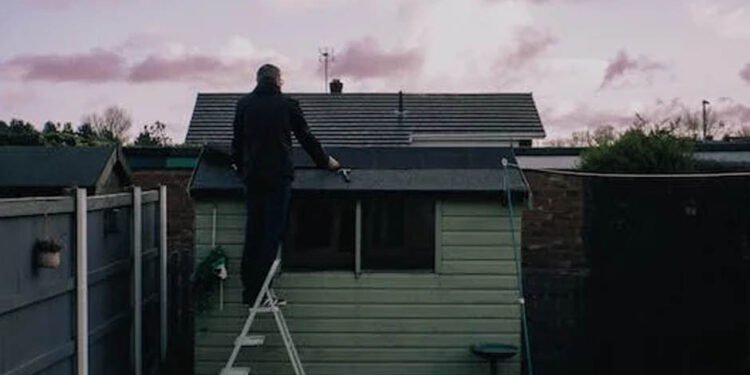When it comes to roofing, the materials chosen can significantly impact the durability, aesthetics, and functionality of a building. In the United States, roofing businesses have honed in on a select group of materials that blend reliability, cost-effectiveness, and customer satisfaction. This blog post delves into the ten most common roofing materials utilized by roofing companies nationwide, shedding light on their unique properties and why they stand out.
Asphalt Shingles
Asphalt shingles are the quintessential American roofing material, widely recognized for their affordability and versatility. They comprise a fiberglass mat coated with asphalt and finished with ceramic granules. This composition offers excellent resistance to external elements, making them durable for diverse climates. Asphalt shingles come in various styles and colors, catering to various architectural designs. Their ease of installation and a life expectancy of 20 to 30 years make them a go-to choice for residential and commercial properties.
Metal Roofing
Metal roofing has grown in popularity due to its longevity, energy efficiency, and sleek appearance. Roofing companies often recommend metal roofs for their fire resistance and ability to reflect solar radiant heat, which can reduce cooling costs. Available in materials like aluminum, steel, copper, and zinc, metal roofs can last 40 to 70 years, depending on the material. They can be designed to mimic traditional roof styles, including shingles, shakes, and tile, providing both aesthetic versatility and durability.
Clay Tiles
Clay tiles are favored for their distinctive Mediterranean and Spanish architectural appeal. This roofing material is known for its exceptional longevity, with some roofs lasting over 100 years. Clay tiles are highly resistant to decay, mold, and fire, making them an excellent choice for areas prone to high temperatures and direct sunlight. Roofing companies often suggest clay tiles for their low maintenance and energy efficiency, as they provide natural insulation.
Concrete Tiles
Concrete tiles offer a more cost-effective alternative to clay tiles while still providing many of the same benefits. They are manufactured in various colors and styles, including options that resemble traditional clay tiles, wood shakes, and slate. Concrete tiles are known for their durability, capable of withstanding harsh weather conditions, including high winds and hail. Franchises appreciate their versatility, making them suitable for various architectural styles.
Slate Roofing
Slate roofing is the epitome of luxury and longevity in roofing materials. Prized for its natural beauty, slate comes in shades of gray, green, purple, and black. It’s incredibly durable, with some slate roofs lasting over 100 years. Slate is valued for its fire resistance and environmental friendliness, as it is a natural stone product. However, its weight and cost make it suitable for structures supporting its heft and for clients willing to invest in its timeless appeal.
Wood Shingles and Shakes
Wood shingles and shakes have been used for centuries, offering homes a natural and rustic charm. Shingles are machine-cut and more uniform, while shakes are hand-split, giving them a rougher, more textured look. Cedar and redwood are commonly used due to their resistance to rot and insects. Roofing companies often suggest wood roofing for its natural insulation properties and aesthetic appeal, particularly in historical and cottage-style homes. However, they require regular maintenance to prevent moss and mold growth.
Synthetic Roofing
Synthetic roofing materials, such as rubber, plastic, and polymer, are designed to mimic the appearance of natural roofing materials like slate and wood. These lightweight and durable options are gaining traction for their ease of installation, low maintenance, and resistance to weathering. Synthetic roofs are eco-friendly, often made from recycled materials, and can last 40 to 50 years, making them a sustainable choice for modern roofing.
Green Roofing
Green roofs, or living roofs, are covered with vegetation, providing numerous environmental benefits, including reducing stormwater runoff, improving air quality, and enhancing building insulation. Green roofs are recommended for urban environments to help mitigate the heat island effect. They require a robust structural support system, waterproofing, and a commitment to maintenance, but they offer unique aesthetic and ecological advantages.
Built-Up Roofing (BUR)
Built-up roofing, commonly known as BUR, is a traditional flat roofing system comprising multiple layers of bitumen and reinforcing fabrics. This type of roofing is valued for its durability and waterproofing capabilities, making it ideal for low-slope or flat roofs. Depending on materials and maintenance practices, BUR systems can last 15 to 30 years. They offer excellent UV protection and resistance to foot traffic, which benefits commercial buildings.
Thermoplastic Polyolefin (TPO) and Ethylene Propylene Diene Monomer (EPDM)
TPO and EPDM are two of the most common single-ply roofing membranes used in commercial roofing. TPO is known for its heat-reflective properties and energy efficiency, while EPDM is prized for its durability and flexibility. Roofing franchises often choose these materials for flat or low-slope roofs due to their resistance to UV rays, chemicals, and ozone. Both materials offer a lifespan of 20 to 30 years and are appreciated for their easy installation and low maintenance.
Conclusion
The diversity of roofing materials available through a roofing franchise ensures a suitable option for every type of building and architectural style. The choices are vast and varied, from the traditional appeal of asphalt shingles and wood shakes to the modern efficiency of synthetic and green roofing. When selecting a roofing material, it’s crucial to consider factors such as climate, building structure, aesthetic preferences, and budget.
Roofing companies are pivotal in guiding homeowners and business owners through this selection process, leveraging their expertise to recommend the best material for each project.












